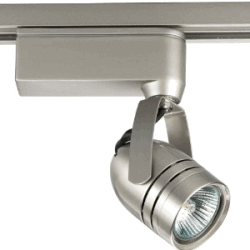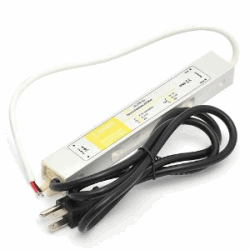12V Light Bulbs: Integrating Low Voltage Lamps
Low-voltage 12V light bulbs provide multiple, smaller sources of light.
Low-voltage 12V light bulbs can provide a remarkable amount of diversity to your lighting design. Low-voltage lighting includes smaller light bulbs that are more energy-efficient and each generate less light than a larger bulb. This allows you to use many different light sources. As a result, you will find that it is easier to cover large areas of space in your home without creating points of glare.
Multiple Sources of Light
One of the most important principles in lighting design is to maximize the number of sources of light, rather than centralize lighting. There are several reasons for this.
- First, it makes it easier to spread light out across the room. Using more concentrated light tends to lead to unattractive puddles of light around the light sources.
- Second, it prevents glare. Having a single or small number of light sources in a room creates an unattractive area of the room to look at.
- Finally, it actually brightens the room. What we perceive as brightness is actually contrast. We see things as bright relative to the brightest object in the room. If there are no especially bright sources of light, our irises open up, brightening up the entire space.

Low voltage bulbs can be parabolic reflectors, LED lights or, in this case, both. This model is available from Amazon.
Low-voltage 12V light bulbs are one of the best ways of providing multiple sources of light for a given room.
Each of the individual bulbs is dimmer than a standard voltage light bulb. The light bulbs are also smaller, allowing them to be more easily distributed without being clunky. This allows you to easily place ten or more lights where standard voltage lighting would only be able to place two or three. As a result, your light sources become more spread out, providing all of the benefits that were mentioned above.
Beam Control
One of the primary purposes for which low-voltage 12V lights were originally introduced was for the purpose of precise beam control. In order for lighting to be properly directed for the purpose of accent lighting and some task lighting, it is necessary to use what is called a “parabolic reflector”, a reflective surface in a parabolic shape that reflects all light in the same direction. However, because higher-voltage lighting requires large fixtures, accent lighting would tend to be bulky and unattractive.
This was solved by the introduction of low-voltage lighting. Lower voltage lighting could be very compact because it allows for a thicker filament and, combined with the compactness of halogen lighting, allowed for extremely small sources of light. At first, there was a problem with heat, but the introduction of aluminum reflector coating resolved most of this difficulty. Low voltage lighting, therefore, is basically a necessity for proper accent lighting.

Halogen 12V bulbs are a very common form of track lighting. This model is available from Amazon.
Note, however, that there is now a great deal of low-voltage lighting available that is not solely for accent lighting. This is because fluorescent and LED lighting can be designed for low voltages (in fact, LED light fixtures work best with low voltages). These smaller light bulbs can be used for non-task lighting that is smaller and spreads the task of lighting over numerous sources.
Color and Power Efficiency
One of the primary benefits of incandescent 12V light bulbs was that they were whiter than standard incandescent light bulbs. This is still true of tungsten and halogen bulbs (though it is irrelevant to fluorescent and LED bulbs, which can be any color). This is because the lower voltage in the filament caused it to burn hotter, creating a cooler color (one of the paradoxes of incandescent lighting is that the hotter a filament burns, the cooler its color becomes). Because all incandescent bulbs are naturally pink, this caused the lights to be less pink and more white.
If, then, you are using incandescent lighting, choosing low-voltage 12V light bulbs will make your lighting appear more white, creating a light that captures many of the blue and green shades that incandescent lighting doesn’t usually render very well. Moreover, white objects will actually appear whiter and less pink (it is for this reason that walls are often painted some sort of cream, as they would otherwise look pinkish). This provides you with far more options in terms of interior design choices.
There is often some question about whether or not low-voltage 12V light bulbs are more energy efficient than standard voltage lighting. The answer is a little complicated. If you are looking for how much energy is consumed by a given bulb, you should look at the wattage, not the voltage of a bulb. So, a 50 watt 12V light bulb consumes the same amount of energy as a 50 watt 120V light bulb. However, if you are wondering how much lumens (light) per watt bulbs give off, the answer is that, for incandescent lights, low-voltage lights are somewhat more efficient. Just as North American standard 120V bulbs are more efficient than European 250V bulbs, so too are 12V bulbs somewhat more efficient than 120V bulbs.
Transformers and Specifications
Because the standard house current in North America is 120 volts and in Europe is 250 volts, transformers are required to turn the current into the 12 volt current required for 12V light bulbs. In general, there are two ways this can occur. First, there can be a transformer inside each light fixture itself, so that you can simply plug your 12V light bulbs right into the fixture. Otherwise, there can be a remote transformer, which changes the voltage before it ever reaches your fixture. This is more common when stringing together multiple fixtures from a single power source.

Transformers, like the one shown here, can be separate from the bulb itself. This model is available at Amazon.
When choosing a 12V light bulb, there are a number of specifications that you should be aware of. These numbers are present right on the bulb, and require some decoding. A bulb type has three parts, its beam angle, its reflector type and its width. I will use the example of a 50AR70 bulb:
- The first number, 50, represents the beam angle. It provides a 50° beam of light.
- The letters represent the type of reflector. “R” refers to a standard reflector. “PAR” stands for “parabolic aluminized reflector”. “AR” refs to an “aluminum reflector”. Finally, “MR” refers to a “multifaceted mirror reflector”. AR and MR lamps are the most common for halogen 12V light bulbs.
- Finally, the last number provides the number of millimetres wide the lens of the bulb is. A few millimetres in the width of a bulb can make a big difference in the width of your beam when shone at a distance.
By varying the beam angle, the reflector type and the lens width, you will have a large number of options in the kind of accent lighting your 12 light bulbs provide.
Putting It All Together
12V light bulbs provide a number or options for providing multiple light sources in your home:
- Low-voltage light bulbs can provide multiple sources of illumination, brightening up your room and spreading out your light.
- Low-voltage light provides precise beam control for accent lighting.
- Incandescent 12V light bulbs provides whiter light than its higher-voltage cousins.
- Choosing a 12V light bulb involves understanding the various specifications.
You can therefore spread out and diversify your lighting sources by using 12V light bulbs.